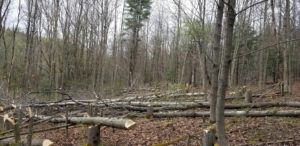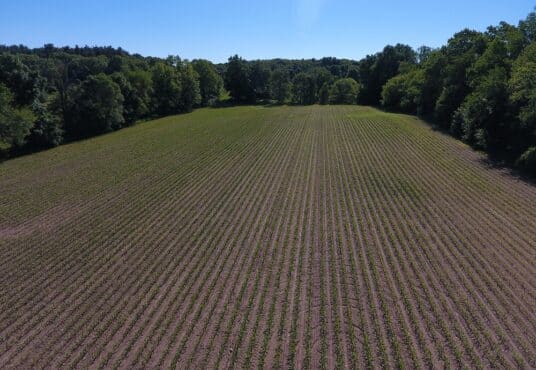Often when spring rolls around, our minds tend to focus on turkey hunting and trout fishing, but it is also the best time to scout and plan for the fall hunting season. Spring is a great time to monitor trail systems on your property, discover new easily accessible camera locations, relocate stand locations that did not produce positive results the previous fall, and develop new ones while the woods are transparent.
The Perfect Spot
One of my favorite aspects of selecting an area for tree stand location is planning the placement of tree stand locations around the cut zones or natural barriers. With a little extra planning, you can get deer to bed in a given area as well as force their travel patterns in a given direction to and from food.
If you know the prevailing wind direction and where you want your stands placed, you can tilt the odds in your favor to have more successful opportunities this fall. If you hinge cut an area correctly or find funneling terrain or natural barriers, you can direct deer traffic to trails that benefit you best for the upcoming fall.

The most important aspect of creating a corridor to enhance a stand location is the tree stand location itself. We suggest you find a tree that gives you great access in and out of the area through non-deer habitat with definitive wind advantage.
After the stand location is found, careful planning and work need to be done to enhance the movement within your preferred shooting lanes in range for a shot with a bow. From handsaws to chainsaws, there are several ways to perfect your ambush and keep stand sites ready to rock come fall.



















![The Best Deer Camp Chili [VIDEO] Deer Chili Ingredients, Tomatoes, Chili Spices](/wp-content/uploads/2015/10/Deer-Chili-Deer-Camp-Recipe-218x150.jpg)
![How to Call Elk Early in the Season [VIDEO]](/wp-content/uploads/2016/08/byers003-218x150.jpg)




![Idiots Disturb Hunter: How Would You Have Handled It? [VIDEO]](/wp-content/uploads/2015/10/DSC00110-e1474487693878-100x70.jpg)
![Albino Buck Shocked to Shed His Antlers [VIDEO]](/wp-content/uploads/2015/10/AlbinoDeer-100x70.jpg)